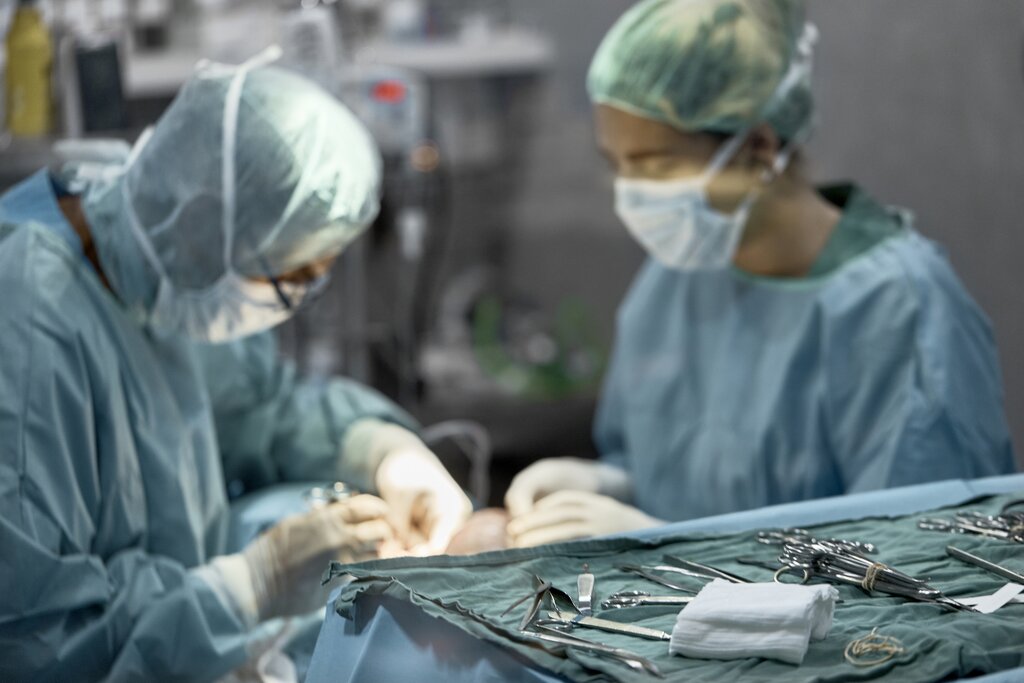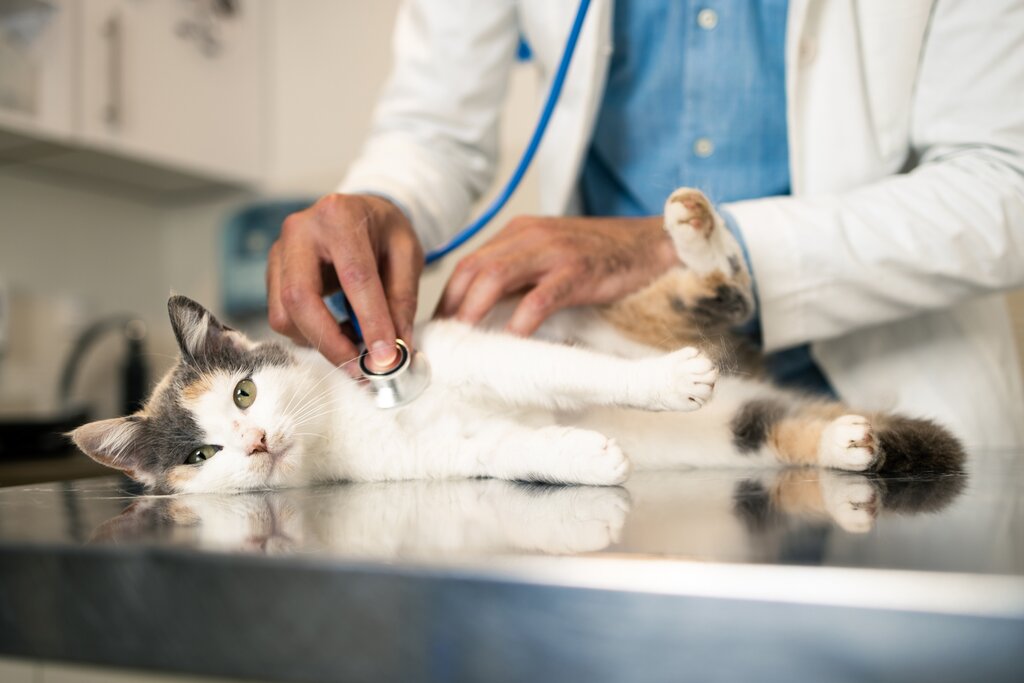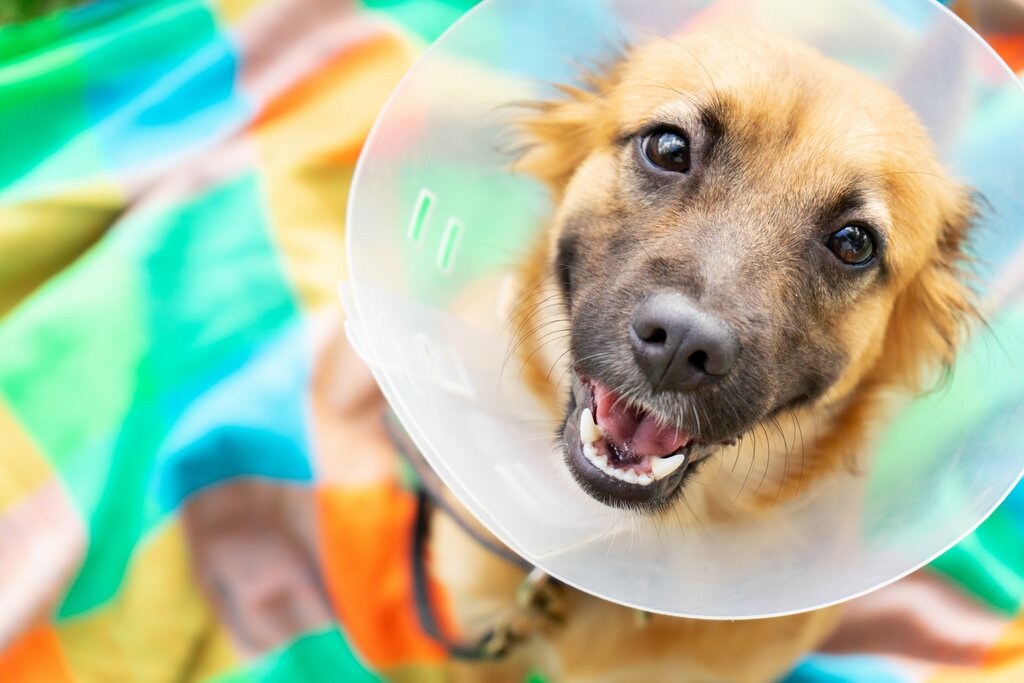Last Updated: 10/06/2025
Guide To Desexing And Your Pet
Thinking about desexing your pet? Find out all you need to know about to prepare your pet.
Author: Dr Carla Paszkowski BVSc (Hons)
Reading Time: 33 minutes - long read
The prospect of your beloved pet undergoing surgery can be understandably stressful. The thought of them under anesthesia, vulnerable and at the mercy of medical procedures, is enough to make any pet owner anxious. But with the right knowledge and preparation, you can ensure a smooth and successful experience for both you and your furry friend.
In this guide, we'll delve into everything you need to know about your pet's desexing procedure. From pre-surgery preparations to post-operative care, we'll provide you with essential information to help you make informed decisions and alleviate your concerns.
What does the desexing procedure involve?

The term 'desexing' is a little misleading. Your pet will not lose their gender; they will remain male or female after the procedure. They will just be sterilized, which means they cannot breed.
At most vet clinics, surgical sterilization involves removal of the uterus and ovaries for females in a procedure called an ovariohysterectomy, and the removal of the testes for males in a procedure called an orchidectomy. More commonly, the procedures are known as a 'spey' for females, and a 'castrate' for males.
Desexing male dogs: A common misconception is that during a castrate, the vet will remove the scrotum and the testes together. This doesn't occur. Unless your dog is particularly mature, or has a problem with his scrotal skin, there is no point removing the scrotal skin as this causes unnecessary tissue damage and creates a much longer healing time. Instead, your vet will make a small nick in the skin in front of the scrotum, gently squeeze the teste through the small hole, and remove them efficiently and swiftly. For the most part, desexing a male is relatively quick, minimally invasive, and not very painful.
Desexing Female Dogs: For females, the procedure is longer and a little more serious as it involves going into the abdominal cavity. A common misconception is that the smaller the incision line, the better the procedure. This is true to some extent - more experienced surgeons tend to use smaller incision lines than recent graduates - however, a larger incision line can be good as it means the surgeon has much better visibility, and can control any potential problems a lot quicker. Many experienced vets make a point to make a larger incision line as a precaution in case anything goes wrong.
Whilst traditional spey procedures are still very much the norm, laparoscopic desexing for dogs has been developed and is performed in some vet clinics. Laparoscopic desexing differs from the traditional method in that the vessels and ligaments of the reproductive system do not have to be exteriorised during the procedure, allowing a much smaller incision to be made, less disturbance of the abdominal wall and organs, reduced risk of bleeding and infection, and reduced pain post-operatively.
Desexing Male Cats: Of all the desexing procedures, castrating male cats is the quickest and least invasive. Your vet will make a small incision over the skin of the scrotum, squeeze the testes through, tie off the spermatic cords, and remove the testes. Sutures are not usually placed, as they are not required.
Desexing Female Cats: The procedure for desexing female cats is the same as that for female dogs, though can tend to be a little quicker due to their smaller size. Cats are particularly adept at removing their incision line sutures, so your vet may place intradermal sutures (within the skin) to prevent this from happening.
Should I desex my pet?

This topic could be discussed for hours and hours, so to save time we'll just list the pros and cons of desexing.
Pros of desexing
- Your pet will not be able to breed, so no unwanted pregnancies! Also, there are enough homeless puppies and kittens in the world, so desexing helps deal with overpopulation.
- Behavioural issues are less likely to occur, including aggression, dominance, hyperactivity, destructive behaviour, and running away
- Females will not go on heat (have a reproductive cycle) - which brings with it annoying behaviour and some messy discharge. Cats on heat will yowl, try to escape, and become incredibly clingy.
- In females, their risk of mammary tumours (breast cancer) is significantly reduced, and their chance of pyometra (infected uterus) or ovarian cancer is eliminated.
- In males, their risk of prostate issues and anal gland issues (including anal gland cancer) is significantly reduced, and their risk of testicular cancer is eliminated
Cons of desexing
- Your pet will have to undergo a general anaesthesia and surgery, which while considered generally safe, always carries some risk.
- Your pet may experience a slower metabolism after desexing, which can lead to weight gain if you aren't careful.
- There is also some evidence that desexing a female too early can lead to incontinence later in life. There is some debate over this, but nonetheless some vets have started recommended waiting until after your dog's first heat (first reproductive cycle) has finished before desexing.
DID YOU KNOW: every time a female dog goes into heat, her chance of getting mammary (breast) cancer later in life increases by 20%! Also, it is estimated that approximately 25% of non-desexed female dogs will experience pyometra (which is life-threatening) in their middle to older age.
What to do before desexing

Find a vet you trust. The first thing to do is to make sure you have found a vet clinic you are happy with. Different vet clinics provide a different quality of service, and cheaper is certainly not always better.
Typically, a 'better' vet clinic will provide more monitoring and support throughout the procedure, and will give adequate pain relief before and after the procedure.
In an ideal anaesthesia, your pet would be monitored the same as a human going through surgery - with constant monitoring of their heart rate, oxygenation level, blood pressure, temperature, and carbon dioxide levels. For support, they will have a means of heating their body temperature, an IV fluid drip throughout the whole surgery, and a dedicated anaesthetist (a trained nurse is fine) able to give pain medication or emergency drugs if needed.
However, this level of monitoring and support is not mainstream, and vet clinics provide different levels of monitoring and support. Basically, the more of the aforementioned monitoring and support methods provided, the better.
At the very least, if you are curious about the quality of service, you should ask your vet: 'Will my pet receive IV fluids?' and ask them to discuss what monitoring is done during the procedure. (A device called a 'pulse oximeter' is generally considered a basic piece of monitoring equipment, so be a little wary if the clinic does not have one).
It is also worth asking about pain relief after the procedure - it is now established that for best patient care, take-home pain relief should always be provided for at least 2 days after the procedure. If no take-home pain relief is given, particularly for females, this is cause for concern.
For more information, check out our guide to How to Find a Good Vet.
Prepare your pet. Your pet will need to be fasted the morning of the procedure. This can be tough, but is very important as regurgitation of food can be deadly in an anaesthetised patient.
Prepare your home. Your pet will need to be kept fairly quiet for 5-14 days after the procedure. This can be extremely difficult, but is achievable if you have a plan. Many people choose to keep their pet indoors for this period of time, and often delegate a room (such as a laundry) to keep them confined for the first night in particular. A crate or a pen is also great for keeping your pet confined for this period of time.
Caring for your pet after desexing

What to expect: Your pet will have a shaved area around the surgery site, and usually a shaved patch on their front leg where injections were given. A shaved patch on your pet's neck may also be present if blood was taken for testing.
Your pet will have an incision line and sutures in place after the surgery (except in the case of male cats, which normally do not require stitches). Some surgeons will do intradermal sutures which are all hidden on the inside of the skin, but some prefer to keep sutures on the outside. External stitches need to stay in place for 7-14 days, and it is very important you don't let your pet remove them prematurely.
To stop your pet from biting out the sutures, it's important to keep a dog cone or Elizabethan collar (or 'cone of shame' as they are sometimes called) on them at all times. Your vet will usually provide one for you upon discharge.
Confinement: As mentioned, your pet will need to be kept fairly quiet for 5-14 days. This can be difficult, but is absolutely critical. The last thing you want is for your pet to tear out any stitches, or loosen any important internal ligatures. It can help to purchase a crate, or you can delegate one room such as a laundry or bathroom to keep them confined, at least for the first 1-2 days.
Medication: As detailed above, your vet will hopefully have sent your pet home with pain relief. This can come in the form of a tablet, a syrup, or even a topical cream. It is important you follow the outlined directions for this - while it can be hard to give medication to your pet, try your best to administer the dose recommended as the first few days after surgery can be painful without medication.
Feeding: Follow your vet's instructions with regards to feeding your pet after surgery. Generally, most vet clinics will recommend giving them a meal in the evening that is a little smaller than usual, and try to feed them the meal slowly. If any vomiting occurs, call your vet for advice.
Must have products for desexing recovery
Desexing FAQs
Further Reading
Want to read more? Check out our other articles:
Premium pet food: Is it worth it?
Teach your puppy to walk on a lead
History
Our experts continually monitor the health and wellness space and we update our articles when new information becomes available.
Jun 11 2024
Written by Dr Carla Paszkowski BVSc (Hons)Dr Carla Paszkowski BVSc (Hons)
Veterinarian
Dr. Carla graduated from the University of Queensland in 2013 with a Bachelor of Veterinary Science and worked for a number of years in small animal clinics across South East Queensland. While Carla enjoys most facets of clinical veterinary work, she holds a special passion for feline medicine, pocket pets, and nutrition.

